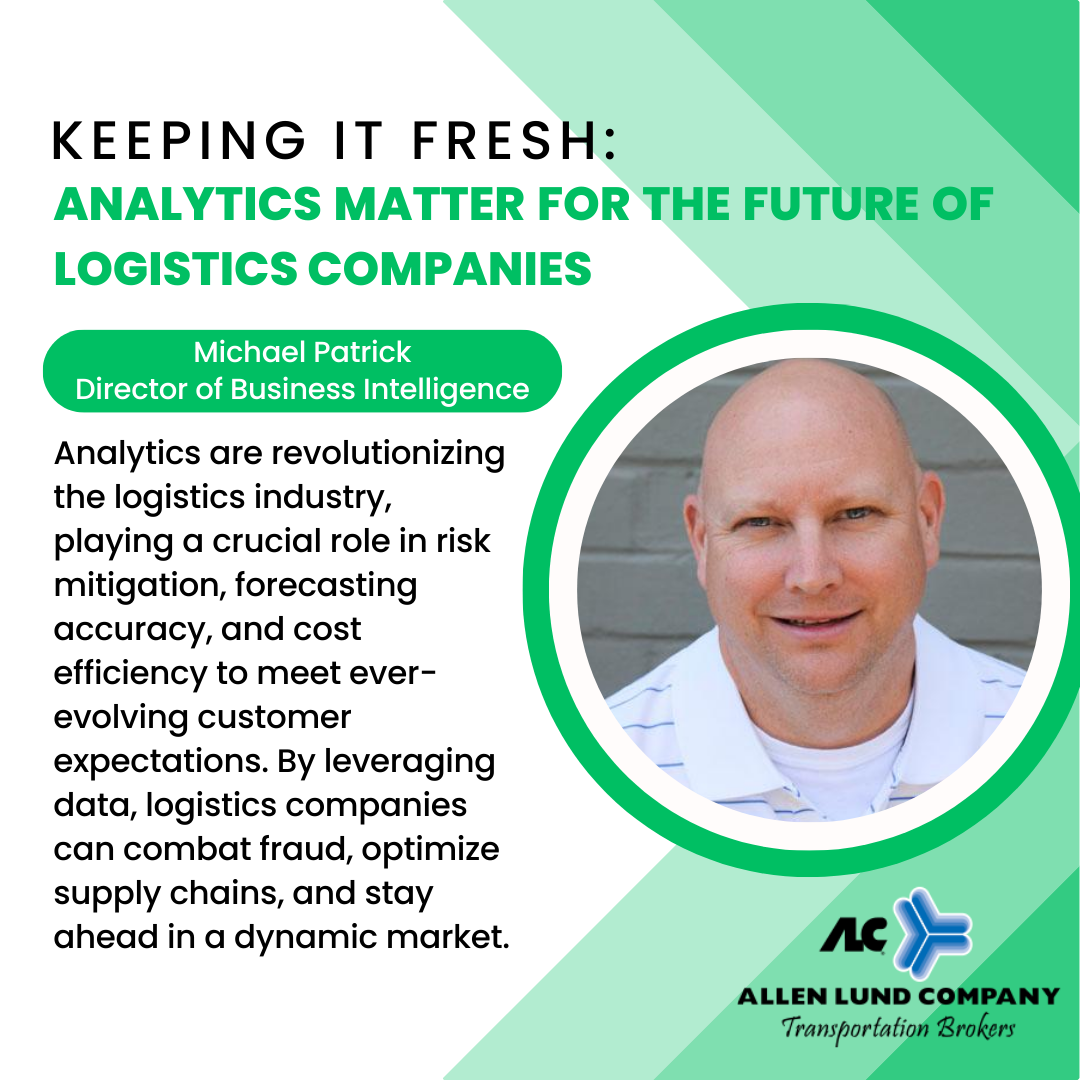
When thinking about the future of logistics, especially 3rd Party Logistics, I always stop and consider how analytics plays a role. Well, truth be told, they play a very large and important role in the success of the organization. Analytics help to mitigate risk, direct the need for forecasting accuracy, and drive cost efficiencies. At the end of the day all these things are important, but the biggest reason logistics companies use analytics is to meet ever-evolving customer expectations, underscoring the customer-centric approach of these companies.
Forecasting is a really hot topic in the logistics industry. Different types of organizations use all kinds of forecasting. Manufacturers use demand forecasts to set production schedules and manage inbound raw materials. This helps with routing guides and warehousing. “Through data analytics, logistics companies can identify and mitigate potential risks in the supply chain, such as disruption, delays and quality issues.” There is also a need for volume forecasts for RFPs (Request for Pricing) and pricing decisions. It seems like everyone in logistics wants some type of pricing forecast. Suppliers want forecast pricing to gauge budget levels, truckers want forecast pricing to help with asset placement, and third-party companies want forecast pricing to respond to RFPs and help indicate potential earning numbers.
With the increase in fraud in the logistics industry it is more important than ever to be on your toes when it comes to mitigating risk. Criminals are growing daily and are getting increasingly bold in their thirst to create havoc in the industry. They are using email addresses that closely resemble real company emails, cell phones that cannot be tracked, and teammates on the inside of suppliers to steal goods from warehouses and even steal entire trailers. When these trailers are found, they are empty, and the items are gone. They are targeting not just valuables like electronics but also loads of vacuum cleaners and clothing. These items are easily sold on the second-hand market. Analytics can be used to identify and utilize carriers with the appropriate level of insurance and vendors with good ratings.
Customers, suppliers, and logistics organizations will continue to rely on analytics to improve efficiencies, grow profits, and create forecasting to meet customers’ ever-changing expectations. With the transportation industry being a moving target, investing in in-house analytics is a great solution to streamline data and adapt to market trends.
Read the original article here


